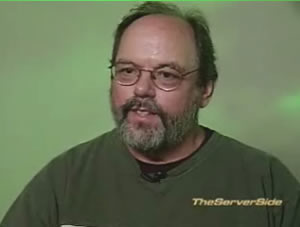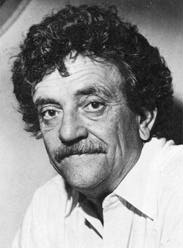TITLE: A Few Comments on the Alan Kay Interview, and Especially Patterns
AUTHOR: Eugene Wallingford
DATE: July 11, 2012 2:45 PM
DESC:
-----
BODY:
Many of my friends and colleagues on Twitter today are
discussing the
Interview with Alan Kay
posted by Dr. Dobb's yesterday. I read the piece this morning
while riding the exercise bike and could not contain my desire
to underline passages, star paragraphs, and mark it up with my
own comments. That's hard to do while riding hard, hurting a
little, and perspiring a lot. My desire propelled me forward
in the face of all these obstacles.
Kay is always provocative, and in this interview
he leaves no oxen ungored.
Like most people do when whenever they read outrageous and
provocative claims, I cheered when Kay said something I agreed
with and hissed -- or blushed -- when he said something that
gored me or one of my pet oxen. Twitter is a natural place to
share one's cheers and boos for an artyicle with or by Alan
Kay, given the
amazing density of soundbites
one finds in his comments about the world of computing.
(One might say the same thing about Brian Foote, the source
of both soundbites in that paragraph.)
I won't air all my cheers and hisses here. Read the article,
if you haven't already, and enjoy your own. I will comment on
one paragraph that didn't quite make me blush:
The most disastrous thing about programming -- to pick one of
the 10 most disastrous things about programming -- there's a
very popular movement based on pattern languages. When
Christopher Alexander first did that in architecture, he was
looking at 2,000 years of ways that humans have made themselves
comfortable. So there was actually something to it, because he
was dealing with a genome that hasn't changed that much. I
think he got a few hundred valuable patterns out of it. But
the bug in trying to do that in computing is the assumption
that we know anything at all about programming. So extracting
patterns from today's programming practices ennobles them in a
way they don't deserve. It actually gives them more cachet.
Long-time Knowing and Doing readers know that
patterns
are one of my pet oxen, so it would have been natural for me
to react somewhat as
Keith Ray did
and chide Kay for what appears to be a typical "Hey, kids, get
off my lawn!" attitude. But that's not my style, and I'm such
a big fan of
Kay's larger vision for computing
that my first reaction was to feel a little sheepish. Have I
been wasting my time on a bad idea, distracting myself from
something more important? I puzzled over this all morning, and
especially as I read other people's reactions to the interview.
Ultimately, I think that Kay is too pessimistic when he says
we hardly know anything at all about programming. We may well
be closer to the level of the Egyptians who built the pyramids
than we are to the engineers who built the Empire State Building.
But I simply don't believe that people such as Ward Cunningham,
Ralph Johnson, and Martin Fowler don't have a lot to teach most
of us about how to make better software.
Wherever we are, I think it's useful to identify, describe, and
catalog the patterns we see in our software. Doing so enables
us to talk about our code at a level higher than
parentheses and semicolons.
It helps us bring other programmers up to speed more quickly, so
that we don't all have to struggle through all the same detours
and tar pits our forebears struggled through. It also makes it
possible for us to talk about the strengths and weaknesses of our
current patterns and to seek out better ideas and to adopt -- or
design -- more powerful languages. These are themes Kay himself
expresses in this very same interview: the importance of knowing
our history, of making more powerful languages, and of education.
Kay says something about education in this interview that is
relevant to the conversation on patterns:
Education is a double-edged sword. You have to start where
people are, but if you stay there, you're not educating.
The real bug in what he says about patterns lies at one edge
of the sword. We may not know very much about how to make
software yet, but if we want to remedy that, we need to start
where people are. Most software patterns are an effort to
reach programmers who work in the trenches, to teach them a
little of what we do know about how to make software. I can
yammer on all I want about functional programming. If a
Java practitioner doesn't appreciate the idea of
a Value Object
yet, then my words are likely wasted.
Ironically, many argue that the biggest disappointment of the
software patterns effort lies at the other edge of
education's sword: an inability to move the programming world
quickly enough from where it was in the mid-1990s to a better
place. In
his own Dr. Dobb's interview,
Ward Cunningham observed with a hint of sadness that an
unexpected effect of the Gang of Four
Design Patterns
book was to extend the life of C++ by a decade, rather than
reinvigorating Smalltalk (or turning people on to Lisp).
Changing the mindset of a large community takes time. Many in
the software patterns community tried to move people past a
static view of OO design embodied in the GoF book, but the
vocabulary calcified more quickly than they could respond.
Perhaps that is all Kay meant by his criticism that patterns
"ennoble" practices in a way they don't deserve. But if so,
it hardly qualifies in my mind as "one of the 10 most
disastrous things about programming". I can think of a lot
worse.
To all this, I can only echo the
Bokononists
in Kurt Vonnegut's novel Cat's Cradle: "Busy, busy,
busy." The machinery of life is usually more complicated and
unpredictable than we expect or prefer. As a result, reasonable
efforts don't always turn out as we intend them to. So it goes.
I don't think that means we should stop trying.
Don't let my hissing about one paragraph in the interview
dissuade you from reading the Dr. Dobb's interview. As usual,
Kay stimulates our minds and encourages us to do better.
-----



